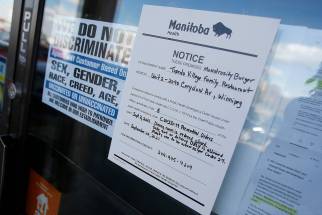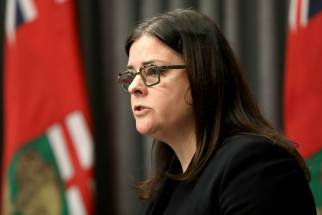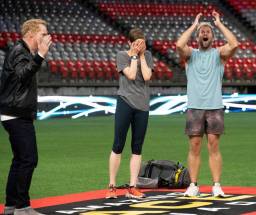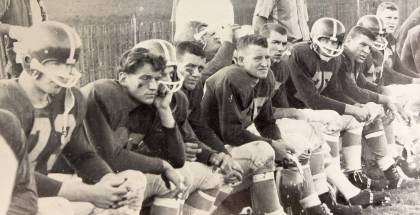Memories burn brightly 60 years later Bisons’ 1962 football squad to be honoured at U of M Homecoming Game
Read this article for free:
or
Already have an account? Log in here »
To continue reading, please subscribe:
Monthly Digital Subscription
$0 for the first 4 weeks*
- Enjoy unlimited reading on winnipegfreepress.com
- Read the E-Edition, our digital replica newspaper
- Access News Break, our award-winning app
- Play interactive puzzles
*No charge for 4 weeks then price increases to the regular rate of $19.00 plus GST every four weeks. Offer available to new and qualified returning subscribers only. Cancel any time.
Monthly Digital Subscription
$4.75/week*
- Enjoy unlimited reading on winnipegfreepress.com
- Read the E-Edition, our digital replica newspaper
- Access News Break, our award-winning app
- Play interactive puzzles
*Billed as $19 plus GST every four weeks. Cancel any time.
To continue reading, please subscribe:
Add Free Press access to your Brandon Sun subscription for only an additional
$1 for the first 4 weeks*
*Your next subscription payment will increase by $1.00 and you will be charged $16.99 plus GST for four weeks. After four weeks, your payment will increase to $23.99 plus GST every four weeks.
Read unlimited articles for free today:
or
Already have an account? Log in here »
Hey there, time traveller!
This article was published 21/09/2022 (1180 days ago), so information in it may no longer be current.
The University of Manitoba is celebrating a band of brothers this week. They were trailblazers, young and a little reckless back in 1962, just like college kids have been for decades.
And just as they were getting started — the Bisons were ushering in the modern era of university football in Manitoba after the program had been mothballed 14 years earlier — they kicked it off with a party for the ages.
The festivities took place in two cities spread out over three days in early October, punctuated by a season-opening 22-8 victory over the University of Saskatchewan Huskies, a jubilant train trip home and an impromptu parade originating at the CNR station in Winnipeg.
Sixty years later, the memory still gives Jeep Woolley chills.
UNIVERSITY OF MANITOBA ARCHIVES Bisons head coach George Depres holds the playbook, with assistant-coach Jeep Woolley and Ihor Mazuryc (50) looking on.
“I had the biggest, ugliest choir that was ever formed,” remembers Woolley, an assistant coach on that Bisons squad. “We did go against university rules and we loaded that train up with beer. After we pulled out of the station on the way home we piled into the smoker (car). It wasn’t a very big room but it was big enough to hold the majority of us and we all piled in there in our underwear. We opened the beer and we sang all the way home.”
Adding to the din were the 700 fans who had taken the University of Manitoba Students Union up on a $10 offer to make the round trip to Saskatoon, with a game ticket included in the package, to join with three dozen players and a handful of coaches on their maiden voyage in the Western Intercollegiate Football League.
Ross McIntyre, a rookie running back, defensive back and punt returner in 1962, had never seen anything like it.
”After we pulled out of the station on the way home we piled into the smoker (car). It wasn’t a very big room but it was big enough to hold the majority of us and we all piled in there in our underwear. We opened the beer and we sang all the way home.”
“We did win that game, but the players were sequestered (on the trip out) and they didn’t know anything about the party that was going on,” says McIntyre, now 81. “Before the game I’d hurt an Achilles tendon so I wasn’t going to be playing and so I enjoyed to the limit the party that was going on… it was so much fun (the CNR) decided they were never going to offer a fan train again.”
It was Manitoba’s lone victory that season — five losses followed — but the enthusiastic throng of fans were caught up in the moment and stormed the field.
“I do remember the parade of fans from the CNR railway station to Portage and Main,” says Bill Malcolm, an offensive lineman on the ‘62 team. “They were doing a snake dance behind the leaders, who were carrying the wooden goalposts from the University of Saskatchewan field… the Bisons fans, who had travelled by train to see the game, had torn down the goalposts at the end of the game and loaded them on the train. Quite a sight!”
“Before the game I’d hurt an Achilles tendon so I wasn’t going to be playing and so I enjoyed to the limit the party that was going on… it was so much fun (the CNR) decided they were never going to offer a fan train again.”
Leading the parade was the senior representative of United College, then affiliated with the U of M, who was apprehended and subsequently fined for his role in the escapade.
The incident generated coverage in both local daily newspapers.
“I was called by a reporter and asked about this senior stick from United College being arrested and charged with leading a parade without a license and – remember, I was a 20- or 21-year-old kid and I didn’t know – my response was, ‘Well this is silly,’” says Marshall Rothstein, who had been elected UMSU president the previous spring. “Well, Jesus, when that came out in the newspaper, I was called by the chief of police.”
Rothstein, who went on to a distinguished career as a lawyer before being appointed a Supreme Court of Canada justice in 2006, wasn’t about to be intimidated by disapproving police chief Robert Taft.
UNIVERSITY OF MANITOBA ARCHIVES Bisons quarterback Nick Laping (25) eludes a swarm of would-be tacklers during the 1962 season.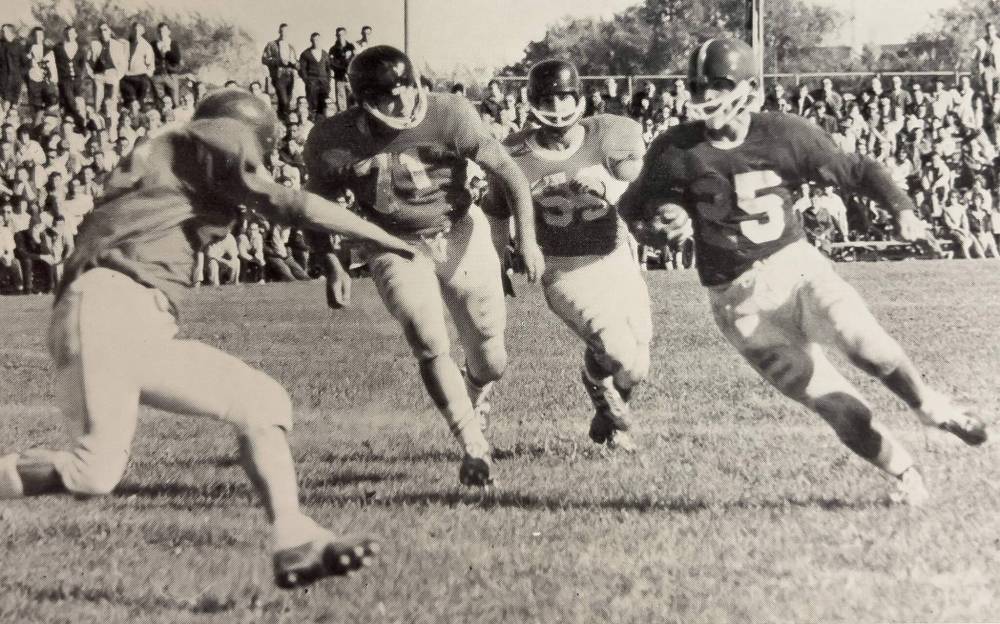
“I’m probably embellishing here a little bit here but what I’d like to recall is that he was telling me about how terrible this was to be tying up the street…,” says Rothstein, chuckling. “And he said to me, ‘What if there was a fire and a fire truck had to get through? I think I said to him, ‘I thought that was what the siren was for.’
“He was furious with me.”
Football fever was apparently running hot and three weeks later, the city’s fire department squashed a student plan to hang city magistrate Isaac Rice in effigy and dispose of him in a bonfire at midfield.
The students were informed they would need a permit for the fire and the Bisons went on to lose a rematch to the visiting Huskies, 15-8. It was Saskatchewan’s first win in almost four years.
Rothstein actually played a central role in the return of football to the U of M campus. Funding a football team had been an issue during his campaign for UMSU president, a response to the austerity measures enacted during the Second World War.
UNIVERSITY OF MANITOBA ARCHIVES Bisons player Ron Braunstein (left) chats with Marshall Rothstein, UMSU president and a future supreme court judge, during the 1962 season.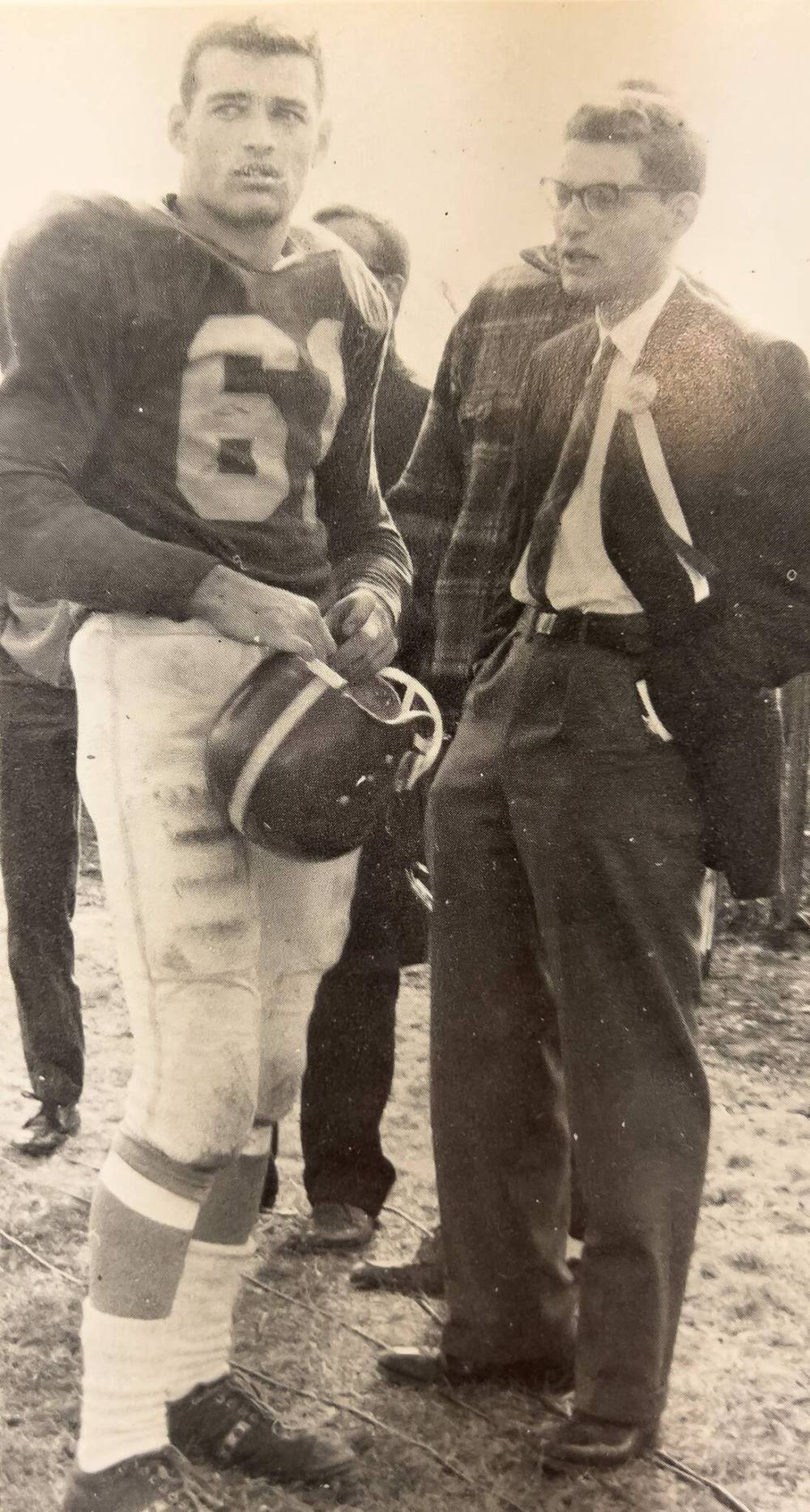
“There was a groundswell or some view amongst the students that they wanted (football) back,” says Rothstein, who retired from the Supreme Court in 2015 and now practices law in Vancouver. “… I had two main planks in my platform. One was to reduce student fees in those days. As I recall, the student fee was $24 and I was going to reduce it by a buck and a half. Reducing taxes is always a winner and I had been the treasurer of UMSU the year before, so I knew what was going on and I knew where we could save money and I ran on reducing the student fee. My other platform was bringing back football.”
Another student and future member of the football team, John Puchniak, had been a vocal proponent of a student vote to consider adding a surcharge to student fees to fund football.
The measure passed overwhelmingly, and with UMSU’s financial support the U of M only had to make good on its promise to build a field — and it did so, erecting Campus Field at the corner of University Crescent and Chancellor Matheson.
The tiny 2,200-seat structure with an elevated press box stood on land currently occupied by IG Field.
Winnipeg’s thriving local football scene, with a plethora of excellent high school and junior teams, was a good source for players.
Bisons head coach George Depres and Woolley had guided the Winnipeg Rods to a national junior crown in 1961.
“I played with Rods when we won the Canadian championship the year before so it was pretty easy for them to convince me that I should at least come for the first year and see how we did,” says Les Allen, a centre and defensive end who came over from the Rods to play for the ‘62 Bisons.
“First of all, being the first Bisons team we were a pretty cohesive group. We weren’t very big and it was pretty exciting for all of us. My memories of it were all good.”
“First of all, being the first Bisons team we were a pretty cohesive group. We weren’t very big and it was pretty exciting for all of us. My memories of it were all good. I know we didn’t have much of a season in terms of winning games, but the fact that everybody was so keen made us excited about playing.”
Mike Shylo, one of the aces running out of a Wing T backfield formation, remembers being part of a pretty green group.
“The junior football programs in Winnipeg were pretty strong and a lot of the good players stayed with the Rods,” says Shylo. “And the university program drew mostly inexperienced players and when we entered the league, we were a very young team and very inexperienced.”
In those early years, the Bisons also had a steadying influence in quarterback Nick Laping. He was a starter in each of his five seasons and was well on his way to becoming a local legend. He died in 2009.
“He was just a little guy and he didn’t have the greatest arm in the world but he was definitely a leader and the rest of the team always got behind Nick 100 per cent,” said Woolley. “And he was smart. He knew the game really well.”
“He was just a little guy and he didn’t have the greatest arm in the world but he was definitely a leader and the rest of the team always got behind Nick 100 per cent.”
Those early Bisons team operated with few extras.
Without a designated locker room, players had to dress in Bison Gardens — a dilapidated former roller-skating rink that was home to the U of M men’s hockey team — and walk 15 minutes to practice. On game days, a transit bus would pick the players up and drop them off at the field.
“It was the rats and us,” says Woolley of Bison Gardens. “We had to use all the rooms because we could only put about 10 or 12 guys per room and then they had a walk a mile to the practice field. It was very quaint.”
The Bisons played at Campus Field before moving to University Stadium, built in time for the 1967 Pan Am Games.
By the time former Blue Bomber defensive back Henry Janzen took the reigns from Depres, the program had gone from a 2-4 record in 1963, 4-2 marks in both ‘64 and ‘65 followed by a 5-2 record and a Hardy Cup (Canada West conference) championship in 1966.
UNIVERSITY OF MANITOBA ARCHIVES Mike Radcliffe (from left), Mike Shylo, Barry Hall, Jim Buckingham, Dennis Long, Wayne Johnson and Bill McCallum.
The foundation, so carefully built by the staff of Depres (who died in 2008), Woolley and fellow assistant Keith Pearce, finally resulted in Vanier Cup titles in 1969 and ‘70.
Remarkably, fullback Mike Shylo played on the ‘62 squad as a raw rookie, left for the workforce after the ‘63 season and returned to play in 1966 and for both Vanier Cup national championships in ‘69 and ‘70.
By his final season, Shylo led the WIFL in receptions while serving as a member of a three-headed running back contingent that also included all-stars Dennis Hrycaiko and Bob Toogood. Bob (Golden Boy) Kraemer starred at quarterback.
“It was a veteran bunch (in 1969 and ‘70),” says Shylo, now 78. “We were still proud of the fact that we were one of the smaller teams in the whole league. Small and fast and very efficient. And we had good coaching too, with Gordie Rowland and Henry Janzen.”
“The two things that I took out of it were the lifelong friendships that I’ve had with teammates from both hockey and football, but also just life learning experience.”
The 1962 Bisons will be honoured during the university’s homecoming weekend Saturday at IG Field’s Pinnacle Room. McIntyre and his organizing committee have reached out to 25 living members of the team and as many 15 are expected to attend a morning brunch followed by Manitoba’s home game against the Calgary Dinos at 2 p.m.
“The two things that I took out of it were the lifelong friendships that I’ve had with teammates from both hockey and football, but also just life learning experience,” says Harry Deleeuw, 81, who played offensive end while doing double duty with the U of M hockey team in 1962.
“Team sports really prepared me a lot for the business that I was in, real estate, but also management. I ended up being president of the Canadian Real Estate Association and did a lot of management through that.”
mike.sawatzky@freepress.mb.ca
Twitter @sawa14
1962 BISONS FOOTBALL TEAM
Players: Bob Akman; Gary Aldcorn; Les Allen; Len Baydak; Terry Boak; Ron Braunstein; Jim Buckingham; Walter Burak; Harry Deleeuw; Jim Duncan; Ron Greenberg; Barry Hall; Peter Hart; Michael Helper; Wayne Johnson; Nick Laping; Dennis Long; Bill Malcolm; Fred Martin; Ihor Mazurc; Bill McCallum; Ross McIntyre; Gerry Mercier; Walter Moroz; Ron Oberth; Sam Pakarnyk; Marshall Peikoff; Andy Pele; Fred Pritchard; Arnold Popeski; John Poustie; John Puchniak; Michael Radcliffe; John Shanski; Mike Shylo; Tom Wood
Head coach: George Depres
Assistant coaches: Jeep Woolley; Keith Pearce
Manager: George Allen
Trainer: Russ Lacomy

Mike Sawatzky
Reporter
Mike has been working on the Free Press sports desk since 2003.
Our newsroom depends on a growing audience of readers to power our journalism. If you are not a paid reader, please consider becoming a subscriber.
Our newsroom depends on its audience of readers to power our journalism. Thank you for your support.
History
Updated on Wednesday, September 21, 2022 7:41 PM CDT: spelling of Woolley in cutline
Updated on Thursday, September 22, 2022 8:52 AM CDT: Corrects references to CNR, CNR station in Winnipeg
Updated on Thursday, September 22, 2022 9:02 AM CDT: Corrects typo

